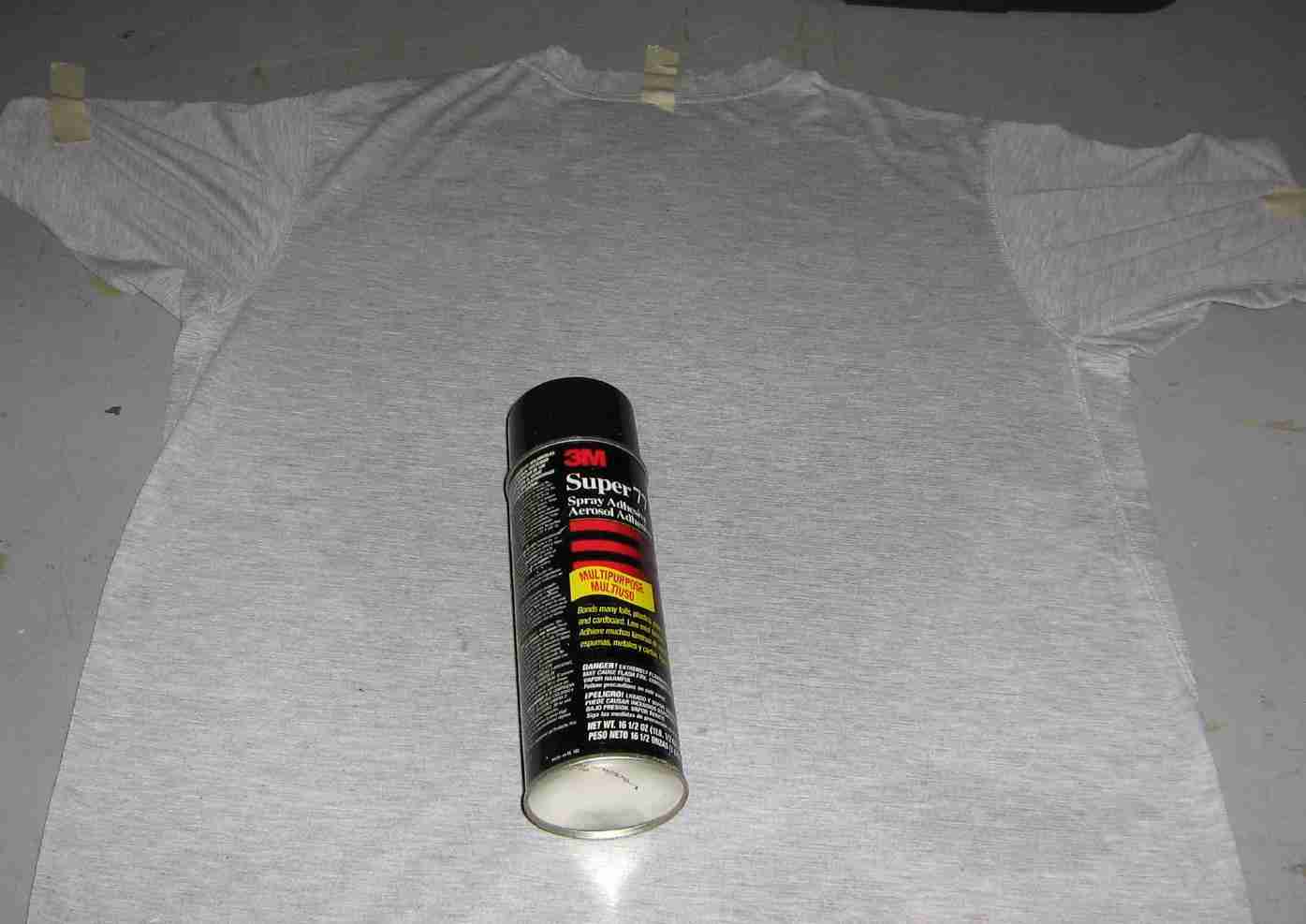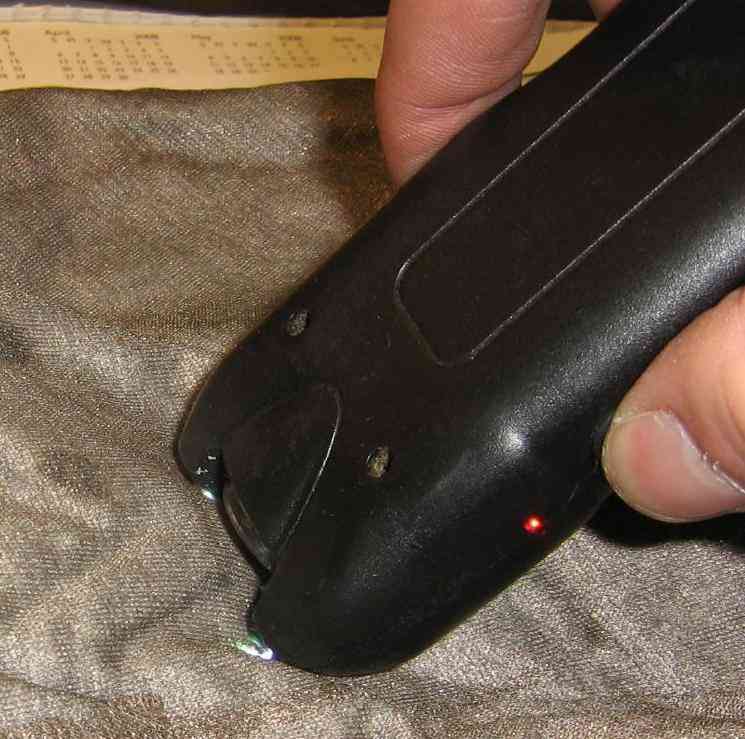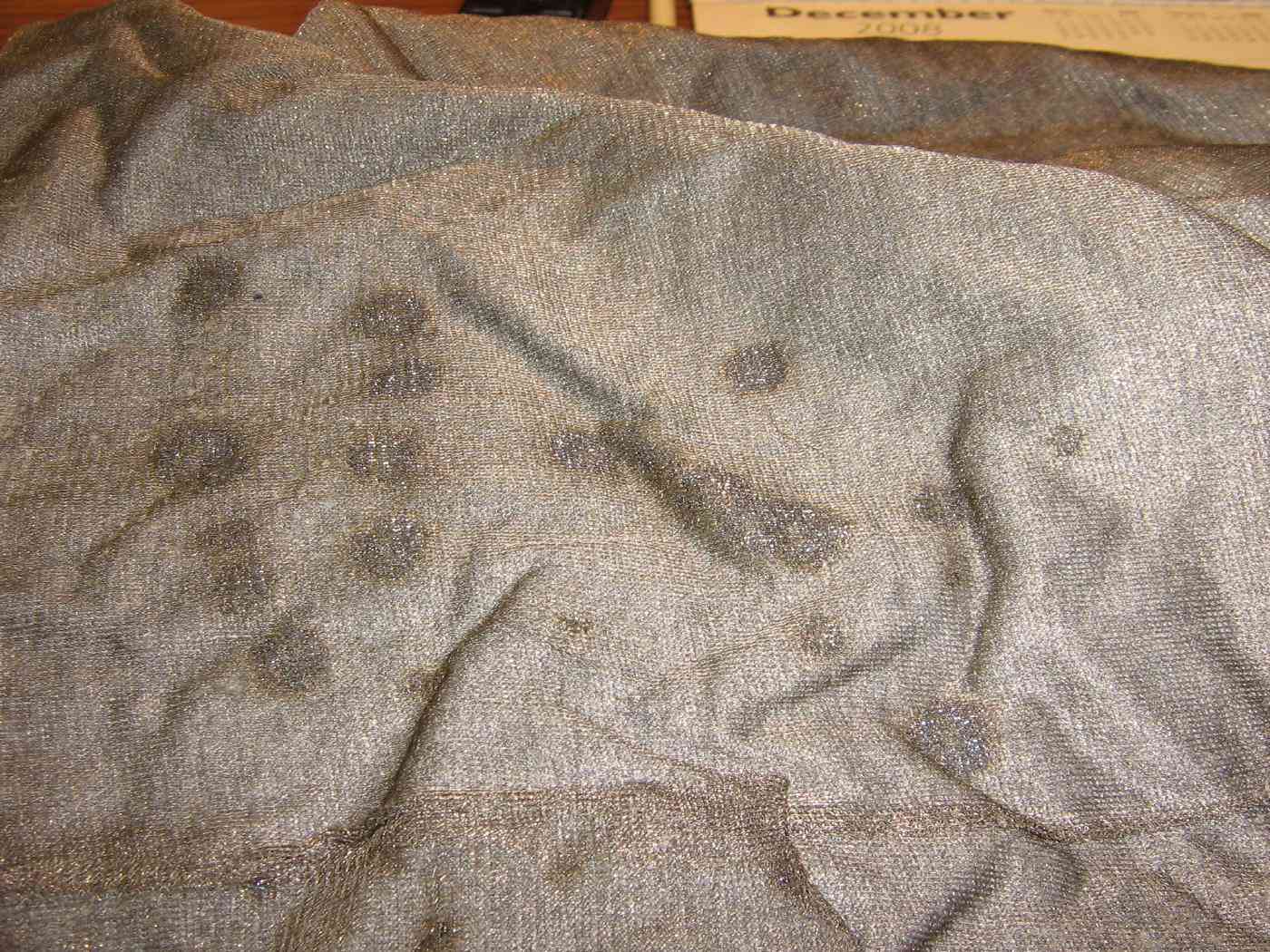Overview
It appears to be possible to defeat TASER electronic control devices (those stun guns shooter things) with a simple modification to your undergarments. Lining the inside of a T-shirt with an electrically conductive fabric allows you to "short out" the electrical shock from the two metal contact probes, or it will at least load down the high-voltage generator in the TASER device, resulting in an electrical shock that is not as intense as the standard 50,000 volts or so.
The good news is that this electrically conductive fabric is readily available. For this experiment, we'll be using the "High Performance Silver Mesh Fabric" from Less EMF, Inc., Catalog #A1222. This fabric is perfect for experimenting and is very easy to work with. The bad news is that this fabric is fairly expensive. Around $15 a linear foot (54" wide). You'll probably need several layers of this material for this method to work "in real life." Also, the silver coating on the nylon fabric will wear off over a period of time and continuous use.
Construction is quite simple. Get an old, tight-fitting T-shirt (you'll want it to be snug against your body) and some 3M Super77, or similar, spray adhesive. Lay out the T-shirt and roughly fit the conductive fabric to match the contour of the shirt. Remove the conductive fabric and apply a good coat of the spray adhesive. Let the adhesive sit for a minute, or until it gets "tacky." Gently place the conductive fabric back onto the T-shirt, cautiously avoiding any tears or creases. Press the fabric down into the adhesive using an old rolling pin. You may wish to apply another coat of the spray adhesive or add additional layers of the conductive fabric. The finished shirt will have a "stiff" feel to it, though.
If using multiple pieces of conductive fabric, they must all have a continous electrical connection! This is a major requirement for this method to work. For example, if lining a pair of pants to protect your legs, there should be a wire (or another piece of fabric) connecting to the fabric on the torso area. The copper/metallic tape used for making stained glass windows can be useful for these applications.
Conductive Fabric Specifications
----------------------------------------------------------------------------------------------
Less EMF, Inc. - High Performance Silver Mesh Fabric
----------------------------------------------------------------------------------------------
Base Fabric : Knit Nylon
Substrate : Nylon
Weight : 40 g/m^2
Temp. Range : -30° to 90° C
Metal Coating : Silver
Metal Purity : > 99%
Electrical Resistance : < 0.5 ohms/cm^2
Wash in warm water, mild soap. No bleach. Air dry. Do not apply heat. Do not iron.
----------------------------------------------------------------------------------------------
Helpful TASER Information
Here are some helpful little tidbits directly from a TASER manual:
- The bottom probe impacts at an 8° angle from the top probe. This results in a spread of approximately one foot for every seven feet of distance from the target. Greater probe spread increases the effectiveness. If possible, a minimum 4-inch spread between the probes is recommended.
- The current must pass between both probes. If one or both probes miss the subject, deploy a second cartridge if available. If one probe has made contact with the subject, using the drive-stun on any area of the body will complete the circuit and cause Neuromuscular Incapacitation (NMI). However, the charge effects will stop as soon as the TASER is moved away from the subject.
- If the probes impact in an area where there is very little muscle mass (e.g., the side of the rib cage), the effectiveness can be significantly diminished.
- Probe spreads of less than four inches (including drive-stun) result in little or no effect from NMI and become primarily a pain compliance option. If a close range deployment resulting in limited probe spread does not incapacitate the subject, apply a drive-stun, as described below, to a point away from the probes. This will effectively widen the contact area and can achieve NMI.
- Normally, aim the laser of the device at one of the large muscle groups (center of mass) such as the torso or thigh areas.
- Look at the doors of the cartridges (the part facing you). This tells you how far it reaches and if it's an "E" cartridge. "E" cartridges have a longer probe (3/4-inch compared to 1/2-inch). Try to get the wires to cross, this can short the system out. Also try to fall in a rolling method away from the device. Do it hard enough and you may break the connecting wires (they are not very strong, but most deployments are at very close ranges, so there's alot of wire). Lastly, if you have body armor, the TASER can run its charge right through it, and up to approximately 1 inch of clothing. If you have armor, put tin foil in it, the arc will stay on the foil.
- Yellow: 15 feet (Civilian)
- Yellow with Cross Hashing: 21 feet (Original)
- Silver: - 21 feet
- Green: - 35 feet
- Green with Cross Hashing: - 35 foot "E" cartridge
Construction Notes & Pictures

Overview of what's needed. An old T-shirt, some electrically conductive fabric, a good pair of scissors, some masking tape, and some spray adhesive.

Lay out the T-shirt on a surface which will not get ruined by the overspray from the spray adhesive. Stretch it out so there are no creases and secure it with some masking tape.

Before applying the spray adhesive, cut the conductive fabric so it fits the contours of the shirt. Remove the fabric and apply a good coating of the adhesive. Carefully reapply the conductive fabric, avoiding any creases. Press it down using a rolling pin.
(The upper corner was cut wrong on this example.)

Conductivity test. With the probes about one foot apart, the meter is reading "2.1 Ohms."
Stun Gun Zap Test

Testing using a Cheetah Stun SAG-106 stun gun.
Output voltage is listed as 650 kV, which is very unlikely.
The conductive fabric appeared to short out the stun gun.

Alternate view of the shorted output.

Burn marks left on the conductive fabric after the stun gun testing. These spots were no longer electrically conductive, so this appears to be an "one time use" application.
Countermeasures
A potential anti-TASER clothing countermeasure could envolve coating the metal probe with a non-conductive enamel, leaving just the tip exposed. This would prevent the electrical shock from being shorted out by external clothing. This would require the probe's tips to enter into the skin for the TASER to be effective.










